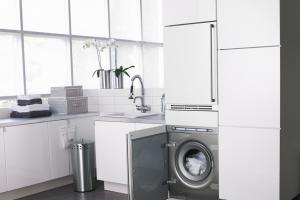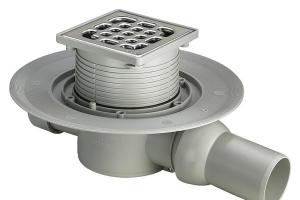How to close the pipes in the toilet? 7 easy ways, 4 possible materials
Noticeable communications in the bathroom do not add to the attractiveness of the room. How to close the pipes in the toilet? We offer you several fairly simple and reliable options for ennobling the room without compromising its functionality.
We have already considered how it is possible. The same methods are suitable for the toilet. Let's remember them.
Plastic panels or drywall
The fastest way to close communications in the toilet is with plastic panels. They will fit regardless of the finish of the walls, floor and ceiling. The main thing is to choose the color and pattern.
The advantages of this material:
- environmental friendliness;
- simple installation;
- fast installation;
- low cost;
- the ability to install a door to access meters or spikes where breaks are possible;
- the possibility of installing a collapsible structure;
- no additional finishing required.
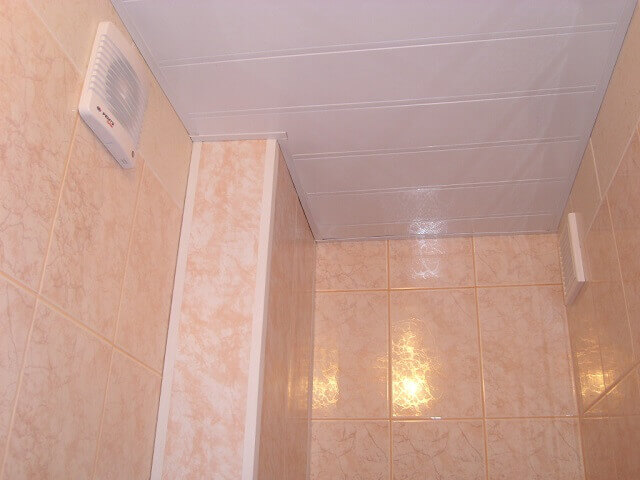
The second convenient material option for the structure with which pipes will be masked is drywall. The toilet is not a bathroom, but it is still better to use a moisture resistant one. Advantages:
- environmental friendliness;
- simple installation;
- low cost;
- the possibility of mounting a collapsible structure;
- the possibility of installing a door for access to communications.
The only drawback of drywall is the need to finish it. But, on the other hand, you can make it the same as the rest of the walls in the toilet.
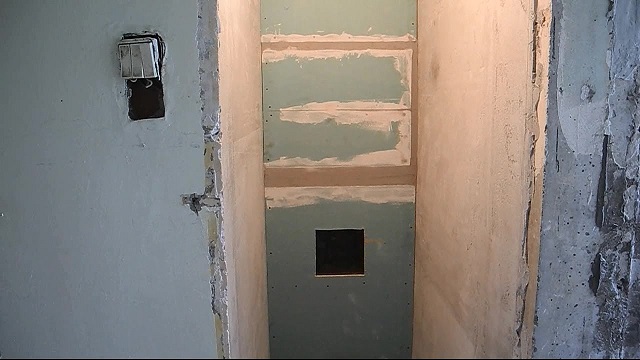
When you decide on the material for the box, you will need to choose its design. Below we will describe all possible options for the installation of plasterboard and pvc panels.
Regardless of the chosen method, do not forget about access to counters and spikes. To do this, you need to mount the door. It can be hidden, or it can be plain white metal, these are sold in almost any hardware store.
The whole wall is covered
The first option for hiding communication pipes in the toilet is to cover the entire wall with pipes. This is done on a metal profile box. In the space where there are no pipes behind the decorative wall, you can make storage for small items (toilet paper, household chemicals, etc.).
There must be at least 3 cm between the wall to be installed to cover the pipes and the pipes themselves! It does not depend on the type of construction chosen.
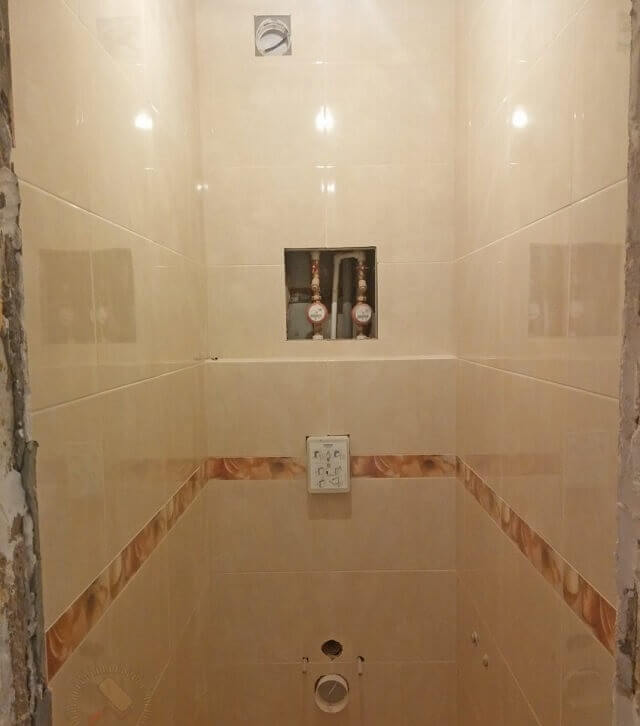
Oblique false wall
If the pipes pass only from the side, then you do not have to close the entire back wall of the room, it is enough to close only the corner with communications.
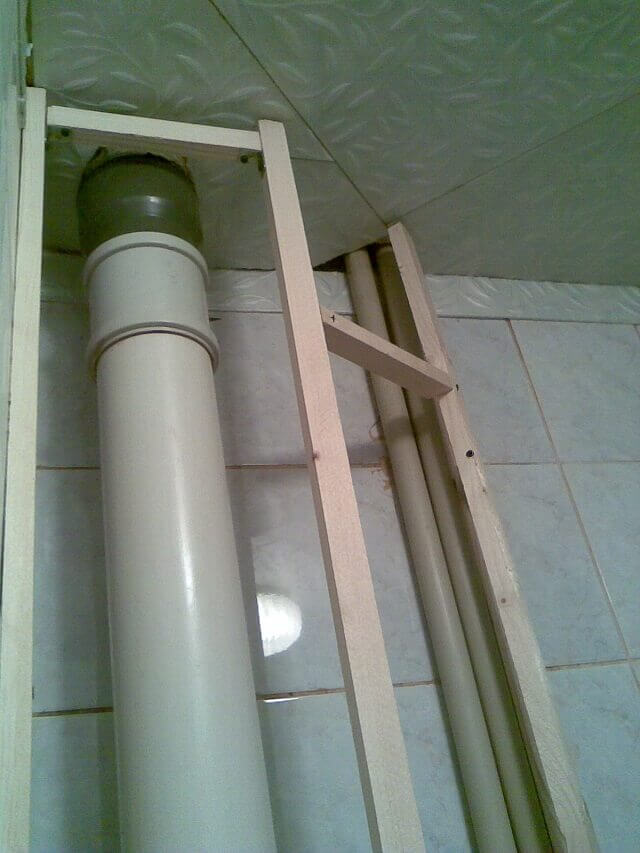
square box
If you are interested in how to close the pipes in the toilet and leave more space, then the answer is simple: make a box only around the pipes. If they go in a corner along the walls, then you get a kind of column in the room. If they walk on the floor, then it will look like a step.
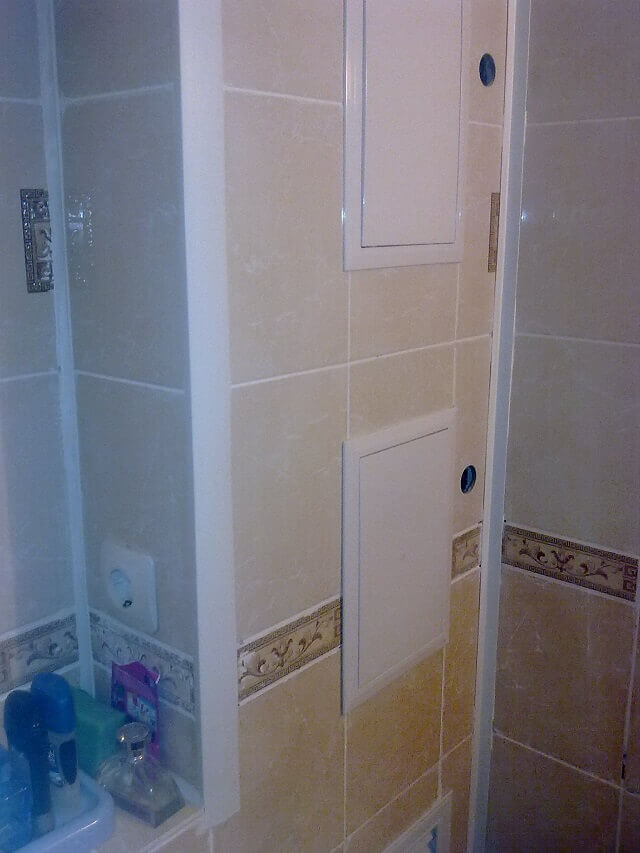
Tiered box
If the pipes do not pass clearly along some wall, but, for example, only up to its middle, then you can make a multi-level box and use it as a shelf for decor, household chemicals, or something else. This method is not suitable for mounting from plastic panels.
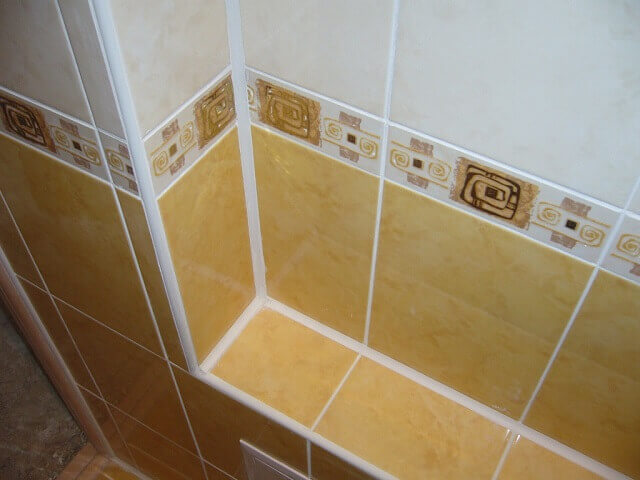
roller shutters
Roller shutters are successfully used to hide pipes. They are mounted less often than drywall or pvc panels, because the installation itself takes more time, the construction is more expensive, and the appearance is not very attractive. But this way you get the opportunity to access any pipes behind the panel and storage space for small items. Of course, for the latter you will have to make several shelves.
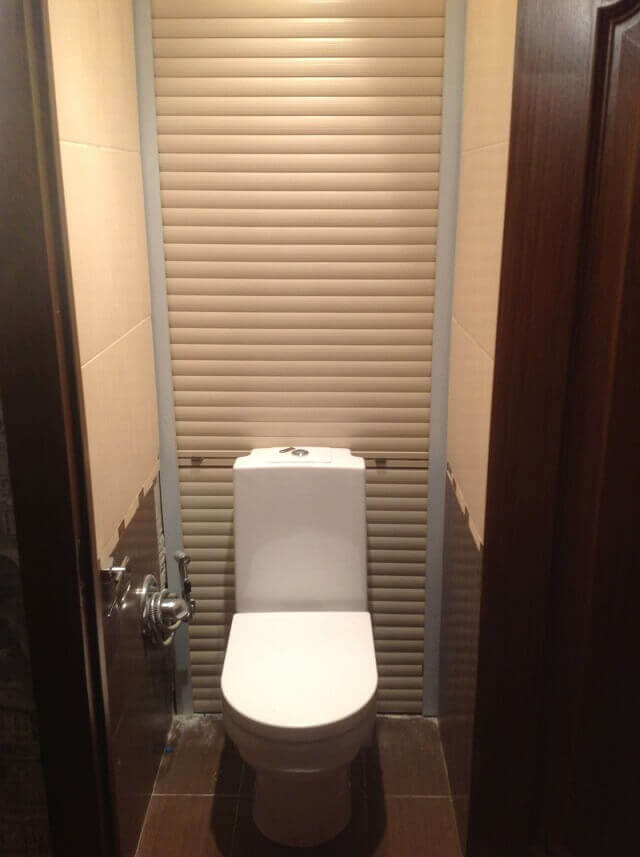
Household locker
A very convenient and pretty way to close the pipes in the toilet room is to put cabinets made of chipboard, wood or plywood. The lower part of the pipes can be covered with a plastic screen that matches the color. So you kill two birds with one stone: you create additional storage space and decorate communications.
The only downside to this method is the price. It is the highest compared to all other options, even if you mount everything yourself.
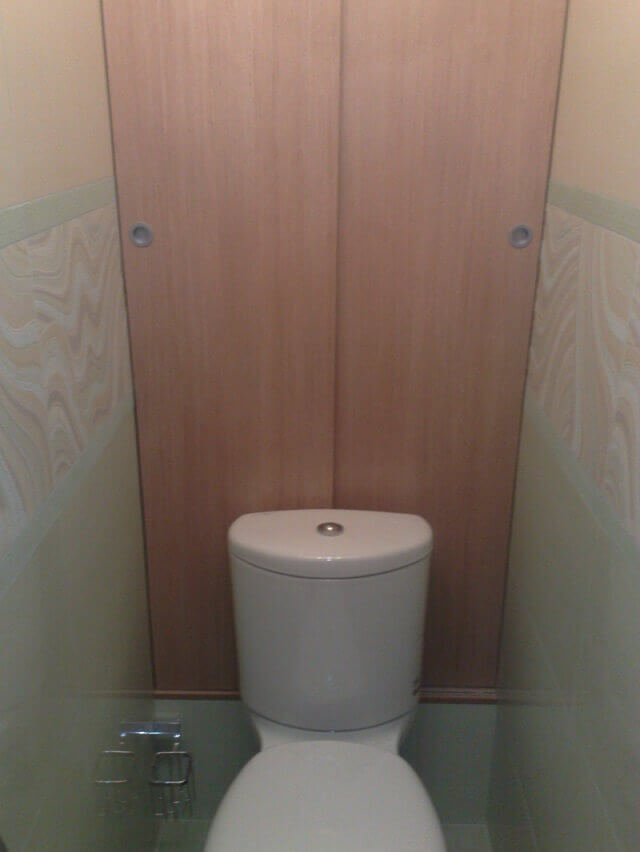
Pipe decoration
With a little ingenuity and skill in making various handmade items, you can decorate the pipes that run through the room with mosaics, decorative painting, rhinestones, and other interesting techniques or materials. 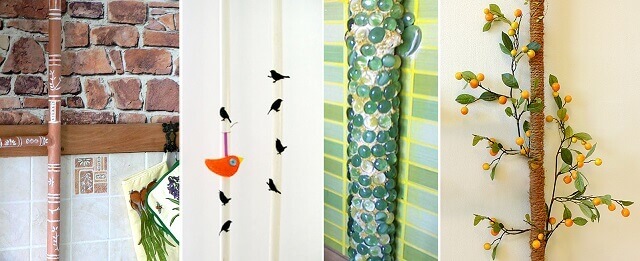
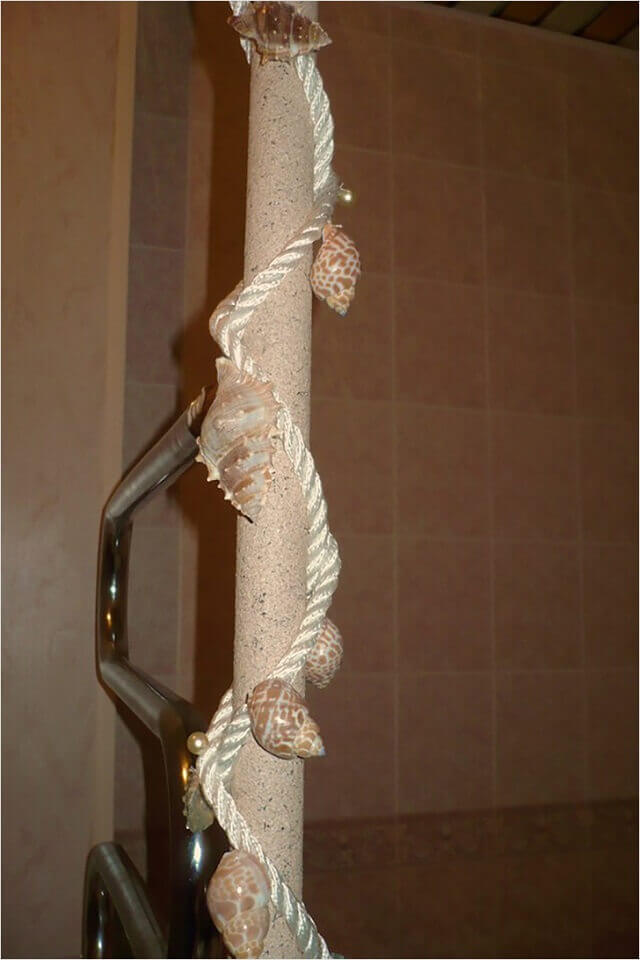
The choice of method and materials for decorating or hiding pipes in a toilet is always up to the owners. There are no strict recommendations or contraindications for any of the above options. Even in a small room, it is usually possible to install a structure made of drywall, pvc panels or chipboard boxes.

